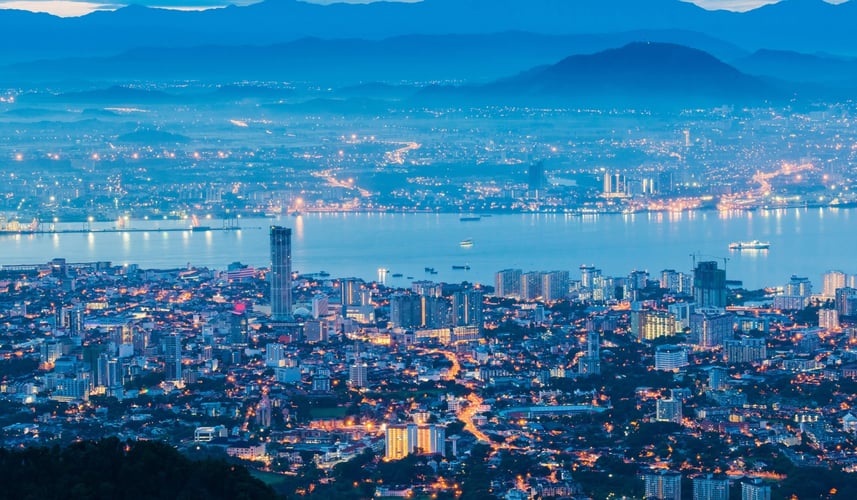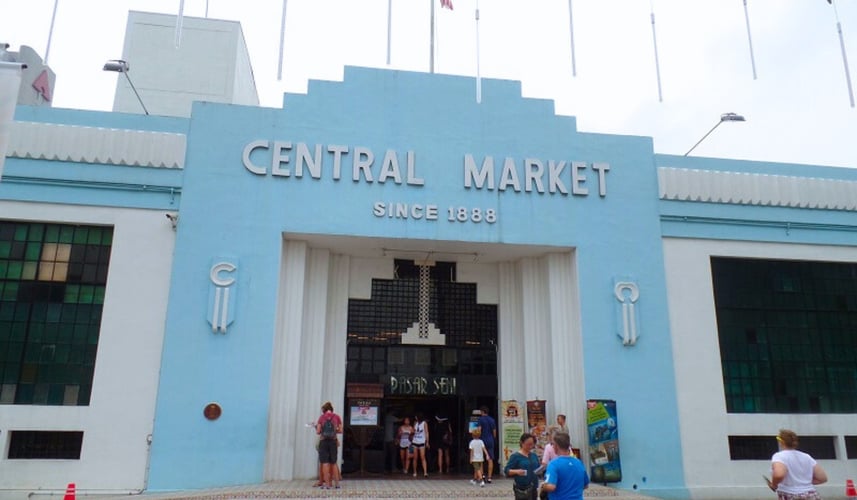Exploring Historical Gems and Culinary Delights in Kuala Lumpur
Kuala Lumpur is a city of amazing contrasts ranging from rich historical architecture to modern wonders. The city is best explored on foot through Masjid Jamek and Chinatown streets. Business communities and tradesmen who settled in the region developed this part of Kuala Lumpur opening shops trading in traditional medicines and other wares. The early settlers included Hakka and Contonese workers who gave a unique cultural identity to this area with its shophouses and eateries catering to the local community.
Chinatown today has undergone significant changes in both identity and appearance. Many businesses have succumbed to commercialization and evolving trends. Nevertheless, a few traditional cafes strive to preserve authentic flavours, attracting a dedicated foodie community eager to savour Chinese dishes like wonton noodles, soups, Hainanese Chicken rice, and beloved desserts. Petaling Street has retained its reputation as a foodie watering hole with many new coffee shops and restaurants giving a unique decadent look.
Starting my trip from Bukit Bintang Kuala Lumpur
The most convenient way to get around most commercial areas in Kuala Lumpur is by using the LRT. I took the LRT from Bukit Bintang and arrived at Masjid Jamek LRT in less than 30 minutes.

The first stop was Masjid Jamek, which sits serenely at the meeting point of two major rivers in Kuala Lumpur. The brick structure and minarets embody the essence of Islamic architecture and design, featuring spacious open halls for people to rest and sit between prayer times. The tranquil and peaceful atmosphere is noteworthy, as the cool white marble tiles provide a refreshing effect.

The area adjacent to Masjid Jamek boasts a vibrant South Indian influence, featuring numerous quality restaurants, particularly from the Chettinad region of India. Sri Mahamariamman Temple, the largest Hindu temple in the vicinity draws many worshippers who purchase flowers and sweets from the many local shops. I paused at a sweet shop to savour samosas, a light Indian deep-fried snack. Saravanaa Bhawan is a popular vegetarian restaurant in the area. I had dinner at Betel Leaf Chettinad restaurant on the Lebuah Ampang.

The streets along Lebuah Ampang are lined with numerous Halal Indian restaurants and mid-range budget hotels, ideal for backpackers and budget-conscious travellers. This is an excellent area to stay if you wish to explore Kuala Lumpur affordably while experiencing the city's multicultural atmosphere. Local shops on Lebuah Ampang sell Indian sweets and snacks are ideal comfort food for Indians. I tasted samosas and onion fritters called pakora.

The next stop on my journey was Kim Yong Jee Noodle Restaurant, where I ordered a beef noodle soup for RM 11 and must admit it was delicious. These traditional eateries preserve the rich cultural essence and draw large weekend crowds.

The streets along Jalan Sultan are home to numerous backpacker hostels and budget hotels that provide quality accommodation at very affordable rates. Many old shophouses have been restored to their original design and transformed into offices and cafes.
Just a short stroll away is the historic Pasar Seni, also known as the central market, which stands as a cultural icon of Kuala Lumpur. This beautifully maintained building is an excellent spot to purchase local cultural artifacts, souvenirs, batik, and artwork.

A food court on the first floor of the building is a nice place to enjoy lunch. The stalls sell popular local food including snacks and drinks. One of my favourite Nyonya Restaurants, Precious Old China is located on the same floor. If you want to enjoy the authentic flavours of KL, make sure to book a lunch at this amazing restaurant.
Nyonya or Peranakan Food is a blend of Chinese and Malay culinary traditions, resulting in a unique and flavourful cuisine. Peranakan food in Malaysia is renowned for its rich, aromatic dishes that often feature coconut milk, lemongrass, and a variety of spices. Signature dishes include Ayam Buah Keluak, a chicken dish cooked with the distinctive buah keluak nut, and Laksa, a spicy noodle soup with a coconut milk base. Another must-try is Nyonya Kuih, a colourful bite-sized dessert made from rice flour and coconut.
These dishes reflect the harmonious blend of cultures and are a testament to the Peranakan community's vibrant heritage. Exploring Peranakan cuisine offers a delicious insight into Malaysia's multicultural tapestry, making it a culinary adventure not to be missed.





After a delightful lunch break, I strolled over to Petaling Street, bustling with tourists browsing for fashion items like clothing, handbags, and children's toys among various other goods. A local vendor offered roasted chestnuts, and several cafes and restaurants specialized in well-loved Chinese dishes. Some of the old buildings have been transformed into vintage-style cafes and coffee shops, attracting digital nomads and the trendy young crowd.
Numerous streets around Jalan Petaling, including Jalan Panggong, feature local watering holes, decadent wine bars, and restaurants that invite visitors to enjoy unique culinary experiences. The Four Points by Sheraton is conveniently situated in this area, providing easy access to many points of interest.

Stunning murals and artwork depict the distinctive cultural history and scenes from a past era. Be sure to capture some Instagram-worthy moments in these hidden alleys of Chinatown.

Strolling along the Heritage Trail that links key landmarks in the area, I arrived at Merdeka Square, the birthplace of the Malaysian nation. This historic site is the venue for numerous nationally significant events.
Merdeka Square, or Dataran Merdeka, is a significant landmark in Kuala Lumpur, steeped in history and national pride. On 31 August 1957, the Union Jack was lowered, and the Malayan flag was raised for the first time, marking the country's independence from British rule.

The square is surrounded by colonial-era buildings, including the iconic Sultan Abdul Samad Building with its stunning Moorish architecture and clock tower. The expansive green field, once a cricket ground, now serves as a venue for parades and celebrations, especially during National Day. Visitors can also explore the nearby Kuala Lumpur City Gallery, which offers insights into the city's past and future through engaging exhibits. As I stood in this historic square, I felt a profound connection to Malaysia's journey and the vibrant spirit of its people.

Just a short walk from Merdeka Square along Jalan Sultan Hishamuddin Road leads you to the KTM Building, a colonial-era architectural gem now serving as the Railway Headquarters. This area is worth exploring as the National Mosque of Malaysia (Masjid Negara) and Islamic Art Museum are within walking distance.

I planned to visit the Museum the following day and returned to the Central Market area for a late dinner at Restoran Yasoof Dan Zakhir, which offers Nasi Kandar cuisine. This style of cooking, influenced by Indian and Arab traditions, is highly popular among locals and visitors from Pakistani and Indian backgrounds.

The following day, I returned to explore Masjid Negara and the Islamic Art Museum, as it took at least three hours to examine the various sections of the museum thoroughly.

That evening, I chose to have dinner in Chinatown. The intersection of Jalan Sultan and Jalan Hang Jebat is home to numerous charming cafes and restaurants, including the Mee Tarek Restoran noodle shop. This popular spot attracts a vibrant crowd of young people and university students.

After a delightful meal, I slipped into Leaf & Co. Coffee to savour a creamy latte with a rich cheesecake. The choices are endless and I decided to book a hotel in the area during my next visit to Kuala Lumpur.
For food enthusiasts eager to discover the diverse culinary delights of multicultural Kuala Lumpur, Petaling Street and its surrounding areas serve as an excellent starting point.
PIN IT TO READ LATER

Featured posts







